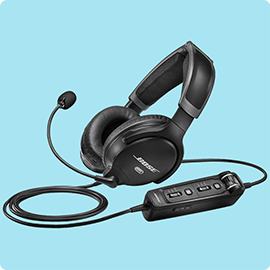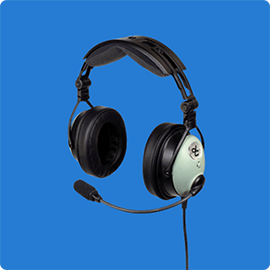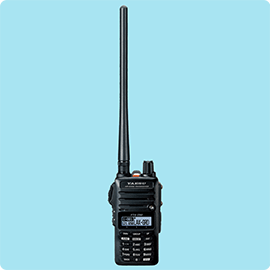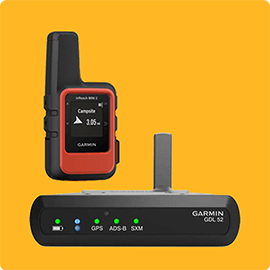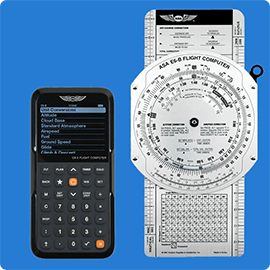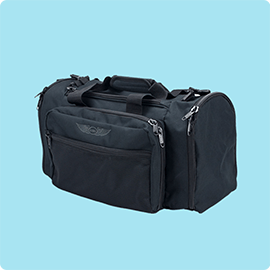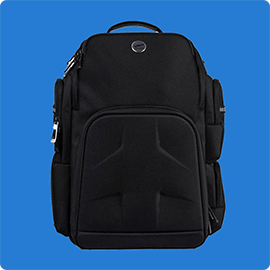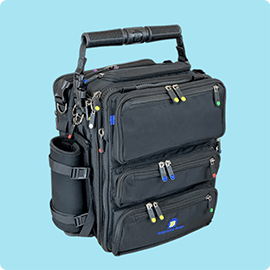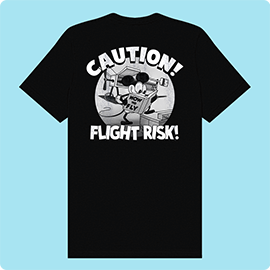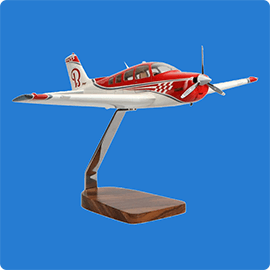Love Your Aircraft: Maintenance & Care 101
Crisp autumn air is your cue to winter‑ready your aircraft. This pilot‑to‑pilot checklist helps GA singles and light twins start easier, run cleaner, and stay protected all season long. It’s practical how‑to with optional tools that make the work quicker and safer—never a hard sell.

Crisp autumn air is your cue to winter‑ready your aircraft. This pilot‑to‑pilot checklist helps GA singles and light twins start easier, run cleaner, and stay protected all season long. It’s practical how‑to with optional tools that make the work quicker and safer—never a hard sell.
Note: Perform only owner‑approved preventive maintenance (FAR 43 Appendix A(c)). Consult an A&P/IA for anything beyond your privileges or comfort level.
1) Clean & Protect the Exterior
Give your aircraft a thorough wash and wax before the deep freeze. Removing summer’s bugs and grime now makes de‑icing easier later, as a smooth, waxed surface sheds ice and snow more effectively. Use aviation‑specific cleaners for paint and plastics.
- Wash & wax: Creates a protective barrier against moisture and corrosion.
- Windshield/windows: Use aviation plastic cleaner & polish to prevent scratches and preserve visibility.
2) Change the Oil (and Consider Oil Analysis)
Old oil holds moisture, acids, and contaminants that you don’t want hibernating in your engine. Start winter with fresh oil and a clean filter.
- Switch to multi‑grade or lower viscosity: 15W‑50 or 20W‑50 circulates faster at cold start, reducing wear. Verify acceptable grades in your POH/engine manual.
- Corrosion protection: If you’ll fly less, consider an approved anti‑corrosion additive.
- Oil analysis: Pull a sample during the change to baseline wear metals and spot trends early.
3) Lubricate & Inspect Moving Parts
Cold thickens lubricants and can make parts stick. Lubricate per your maintenance manual and use the inspection time wisely.
- Key points: Hinges, bellcranks, control cable pulleys, gear pivots, door latches, wheel bearings.
- Controls: Inspect cable condition and routing; have tension adjusted by an A&P if needed.
4) Tires, Brakes & Struts
Cold shrinks air volume—pressures drop. Underinflation stresses casings, lengthens takeoff roll, and risks tube creep.
- Check pressures: Main and nose tires set to POH/MM values; expect ~1 PSI drop per ~10°F temperature drop.
- Inspect condition: Tread depth, sidewall weather‑checking, valve cores.
- Brakes: Pads/pins, line leaks, reservoir levels.
- Oleo struts: Verify proper extension; service if low.
5) Manage the Fuel System
Store with full tanks to minimize condensation and water in fuel. Cold, dense air also changes engine behavior.
- Sump every drain: Check for water/sediment regularly.
- Caps/vents: Inspect O‑rings and ensure vents are clear.
- Fuel‑injected: Have an A&P verify idle/fuel‑flow settings for cold temps.
6) Care for Your Battery
Cold saps cranking power. Test health now and decide your maintenance strategy.
- Capacity/condition: If weak or aging, replace before the first cold snap.
- Maintain charge: Use an aviation‑specific smart maintainer or remove and store warm.
- Save amps: Minimize pre‑start avionics time on cold mornings.
- Other batteries: Refresh flashlight, headset ANR, portable GPS, and CO detector cells.
7) Preheat the Engine Before Flight
Cold starts are hard on engines. Warm the oil and cylinders before cranking, then allow a full, gentle warm‑up.
- Preheat options: Installed electric systems (e.g., sump/cylinder heaters) or portable forced‑air units.
- Cabin & avionics: A safe ceramic heater can prevent temperature shock to instruments.
- Warm‑up: Taxi only after oil and CHTs are in the green. Never rush a cold engine.
- Avoid short ground runs: If you won’t fly long enough to heat‑soak, don’t start—moisture can worsen corrosion.
Don’t forget Pitot/Induction/Carb‑Ice
- Pitot heat test before frost season.
- Induction system: Inspect/replace air filter; verify alternate‑air door operation.
- Carbureted engines: Review carb‑heat usage; moisture + cold can mean carb ice even above freezing.
8) Shield Your Plane from the Elements
If you’re parked outside, covers save time and protect surfaces. Even partial coverage (canopy + cowl) is a big win.
- Essential covers: Canopy/windshield and engine/cowling covers to block frost and insulate the engine.
- Full coverage: Wing and fuselage covers prevent snow/ice buildup and paint chafe (use breathable, snug‑fitting covers).
- Plugs & inlets: Cowl plugs, pitot/static covers keep drafts, moisture, and critters out (use bright RBF flags).
9) Secure Your Aircraft (Outdoor & Hangar)
Outdoor tie‑downs
- Inspect/replace weathered ropes/straps; use nylon/Dacron with adequate tensile strength (at least 1/2" where applicable).
- Keep tie‑downs snug with minimal slack; face into prevailing winds when possible.
- Use sturdy wheel chocks and a gust lock; re‑check after storms or heavy snow.
Hangar safety
- Prevent hangar rash: declutter, secure rolling gear, and move slowly with a spotter watching wingtips and tail.
- Fully open and secure doors before moving the aircraft; always chock indoors.
10) Protect the Interior (Pests & Moisture)
A clean, dry cabin prevents rodents, mildew, and condensation on avionics.
- Deep clean: Remove trash/food; vacuum carpets; wipe surfaces.
- Deter pests: Dryer sheets, cedar blocks, or mint repellents (remove before flight).
- Control moisture: Use a compact dehumidifier/desiccant in the cockpit during storage.
11) Upgrade Cabin Comfort (Seat Covers)
Cold‑soaked seats are no fun. Genuine sheepskin covers insulate in winter and stay breathable in summer, while protecting original upholstery.
- Improved comfort and fatigue reduction on longer flights.
- Durable, fire‑resistant aviation‑grade options available.
- Ensure no interference with seat belts, tracks, or adjustments.
12) Winter Survival Kit
Hope for the best—prepare for the worst. Pack essentials and dress for ground conditions, not just cockpit comfort.
- Space blanket or thermal bag; spare gloves/hat; chemical hand warmers.
- LED flashlight/headlamp; multi‑tool; high‑energy snacks; fire source.
- Verify ELT operation; carry a portable CO detector.
Frequently Asked Questions
- Q1: What’s the best oil for winter flying?
- A: Switch to a multi‑grade oil (e.g., 15W‑50) or a lower single‑grade viscosity listed in your POH/engine manual. Multi‑grade circulates faster at cold start, reducing wear.
- Q2: How long should I preheat my engine?
- A: Depends on ambient temp and equipment. Installed electric heaters often need a few hours; forced‑air solutions can need 30–60 minutes. The goal is a warm oil sump and cylinders before cranking.
- Q3: Are wing covers worth it if I’m tied down outside?
- A: Absolutely. They prevent snow/ice bonding, protect paint, and save major time on preflight after storms.
- Q4: How often should I check tire pressure in winter?
- A: Before every flight and at least every couple of weeks. Expect pressure to drop as temperatures fall; keep a good gauge handy.
- Q5: What special maintenance does my cabin heater need?
- A: For exhaust‑muff shroud heat, have a mechanic inspect the muffler/shroud for leaks (CO risk). For combustion heaters (twins), confirm functional test and service intervals. Always fly with a CO detector.
Printable Fall–Winter Checklist (GA Singles & Light Twins)
Exterior & Airframe
- Wash airframe; apply aircraft wax
- Clean/polish windscreen & windows (aviation plastics)
- Inspect antennas, fairings, static wicks
- Lubricate hinges, bellcranks, latches, gear pivots (per MM)
- Inspect control cable condition & routing (A&P adjust tension)
Tires, Brakes & Struts
- Check main/nose tire pressures (POH/MM values)
- Inspect tread/sidewalls; replace if weather‑checked
- Inspect brakes (pads, pins, leaks)
- Verify oleo strut extension; service if low
Powerplant
- Change oil & filter; sample for oil analysis
- Consider anti‑corrosion additive (if flying less)
- Inspect alternator belt, baffles, hoses, clamps
- Check induction filter; verify alternate‑air
- Carb: review carb‑heat ops; Injected: verify idle/fuel‑flow
- Preheat plan validated (heater test / cowl blanket)
Fuel System
- Top off tanks (reduce condensation)
- Sump all drains; verify no water/sediment
- Inspect caps, O‑rings, vents
Electrical & Avionics
- Battery health/capacity; clean terminals
- Set up trickle charger or remove/store warm
- Refresh batteries: flashlight, headset ANR, GPS, CO detector
- Pitot heat test; exterior lights check
Covers, Plugs & Protection
- Canopy/windshield & engine/cowl covers; wing covers if outside
- Pitot/static covers; cowl plugs; exhaust/intake covers (RBF flags)
- Place desiccant or dehumidifier in cabin
Securing & Hangar
- Inspect/replace tie‑downs; chock wheels
- Controls secured (gust lock)
- Hangar clear of clutter; spotter for moves; chock indoors
Cabin & Safety
- Deep‑clean interior; remove food/trash; vacuum
- Rodent deterrent placed; remove before flight
- Install sheepskin seat covers (comfort & protection)
- Stock winter survival kit; confirm ELT & CO detector
Light Twin Notes (if applicable)
- Combustion heater inspection/service status
- TKS fluid topped; de‑ice boots protected/inspected
Prefer one place to browse? Explore our curated Pilot Gear.
Winter‑Ready Checklist (GA Singles & Light Twins)
|


